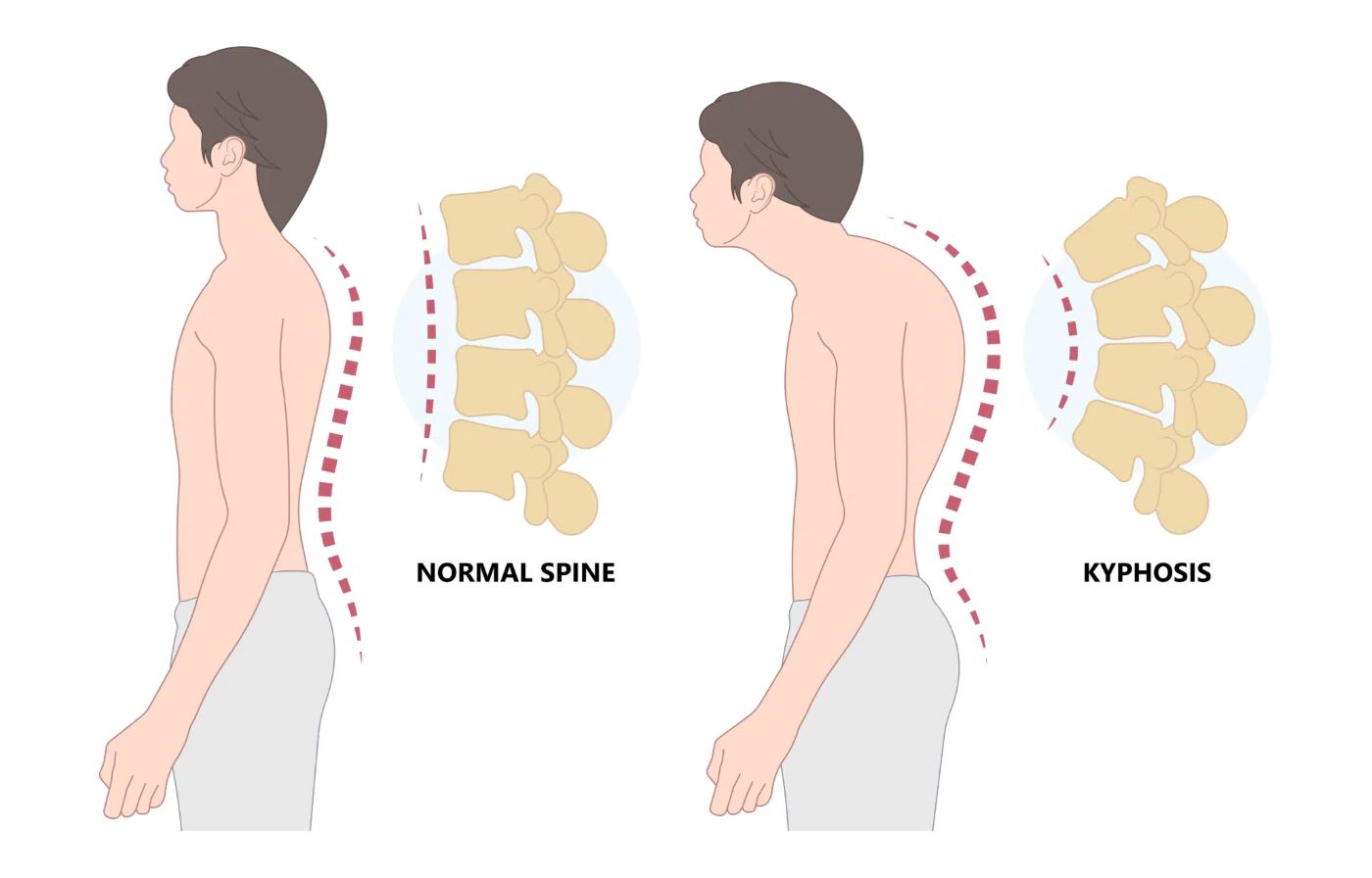
Kyphosis is often categorized into different types, and these have different underlying causes.
Structural kyphosis is a deformity of the spine that is present from birth or develops during childhood. It is caused by abnormal development of the bones in the spine or by abnormal growth patterns. Some causes of structural kyphosis include:
Postural kyphosis is a curvature of the spine that is caused by poor posture or muscle weakness. It is more common in older adults and can be caused by factors such as:
Scheuermann’s kyphosis is a type of structural kyphosis that is caused by abnormal growth patterns in the vertebrae (the bones of the spine). The exact cause of Scheuermann’s kyphosis is not fully understood, but it is thought to be related to genetics and abnormal growth patterns.
Kyphosis can cause a variety of symptoms, including:
The diagnosis of kyphosis can often be made with history and physical examination alone. Examination of the spine may show excessive curve when viewed from the side, giving the appearance of a hunchback.
In some cases, X-ray is used to confirm the diagnoses and determine the severity of the condition. X-rays use electromagnetic radiation to create images of the bones and help visualize abnormal curvature.
There are several measurements that can be taken on X-ray, including the Kyphosis angle, which measures the degree of curvature of the spine as seen from a side view.
The treatment for kyphosis, a condition in which the spine has an excessive outward curve, causing a hunchback or rounded posture, will depend on the severity of the condition and the underlying cause. Some common treatment options for kyphosis include:
It is important to follow the treatment plan recommended by the doctor, as this can help to improve the outcome and prevent long-term problems. In some cases, kyphosis may be reversible with proper treatment and posture correction, while in other cases, it may be a lifelong condition that requires ongoing management.